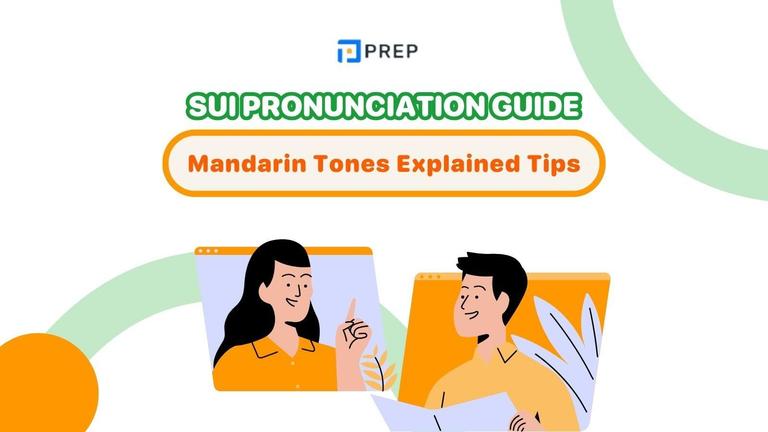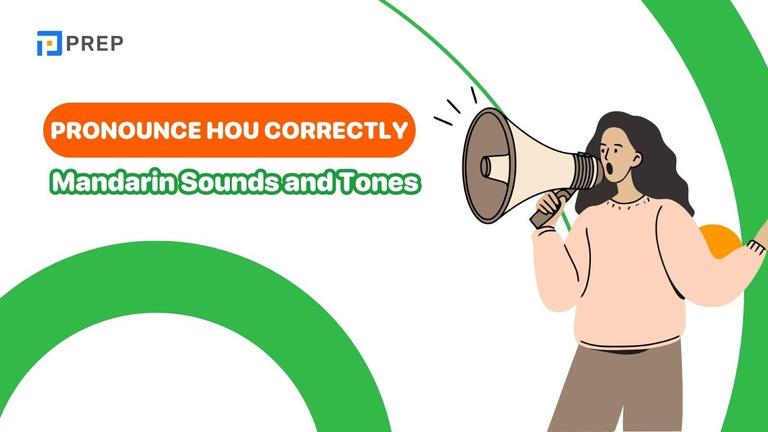Possessive Pronouns: The Complete Guide (Mine vs. My)
Mastering possessive adjectives versus possessive pronouns represents one of English grammar's most persistent challenges. This guide uses a clear "describe versus replace" framework to distinguish between possessive adjectives (my, your, his, her, its, our, their) that modify nouns and possessive pronouns (mine, yours, his, hers, its, ours, theirs) that function as standalone replacements. Through practical techniques and systematic examples, you'll learn to navigate common pitfalls like "its/it's" confusion and develop the confidence needed for precise, professional communication.
- I. A clear definition of possessive pronoun
- II. Solving the Core Confusion: Is It "My Book" or "The Book is Mine"?
- III. Understanding the Two Categories: Independent vs. Dependent Possessive Pronouns
- IV. A Deep Dive into Each Possessive Pronoun in Context
- V. Avoiding Common Pitfalls: The Mistakes Everyone Makes
- VI. Frequently Asked Questions
- VII. From Confusion to Clarity: Using Possessives with Confidence

I. A clear definition of possessive pronoun
A possessive pronoun indicates ownership without requiring an additional noun. These pronouns stand independently in sentences and replace entire noun phrases, eliminating repetitive language while maintaining clear communication.
-
Complete list of possessive pronouns: mine, yours, his, hers, its, ours, and theirs.
-
Example: Instead of saying "This laptop belongs to Sarah, and Sarah's laptop is expensive," you simply state "This laptop is hers, and hers is expensive."
-
Key distinction: Possessive pronouns differ from possessive adjectives, which require accompanying nouns. Possessive adjectives describe nouns (my laptop, your book), while possessive pronouns replace nouns entirely (the laptop is mine, the book is yours).
II. Solving the Core Confusion: Is It "My Book" or "The Book is Mine"?
The difference between "my" and "mine" is the most common point of confusion when learning possessive pronouns. You face this choice dozens of times daily in conversations and written communication, making this knowledge essential for clear expression.
Understanding possessive pronouns transforms your ability to express ownership with precision and confidence. This guide reveals the simple yet powerful rule that governs all possessive forms in English.
-
The Golden Rule: One Describes a Noun, The Other Replaces It
The Golden Rule states that possessive adjectives describe nouns, while possessive pronouns replace them entirely. This distinction forms the foundation of accurate English usage and eliminates confusion between similar-looking words.
-
Possessive Adjectives function as "Describers" that must always be followed by a noun. The complete list includes my, your, his, her, its, our, and their. These words modify and provide information about the noun that follows them.
-
Possessive Pronouns serve as "Replacers" that stand alone and substitute for both the possessive relationship and the noun itself. The complete list includes mine, yours, his, hers, its, ours, and theirs. These words contain all necessary information within themselves.
-
Comparison Chart: Possessive Adjectives vs. Possessive Pronouns
|
Person |
Possessive Adjective (The Describer) |
Example Sentence |
Possessive Pronoun (The Replacer) |
Example Sentence |
|
1st Singular |
my |
She borrowed my laptop yesterday. |
mine |
The laptop she borrowed is mine. |
|
2nd Singular |
your |
Your presentation impressed everyone. |
yours |
The most impressive presentation was yours. |
|
3rd Singular (Male) |
his |
His solution solved the problem. |
his |
The solution that worked was his. |
|
3rd Singular (Female) |
her |
Her research changed our approach. |
hers |
The research that changed everything was hers. |
|
3rd Singular (Neutral) |
its |
The company announced its merger. |
its |
The announcement about the merger was its. |
|
1st Plural |
our |
Our team won the championship. |
ours |
The championship victory was ours. |
|
2nd Plural |
your |
Your ideas revolutionized the project. |
yours |
The revolutionary ideas were yours. |
|
3rd Plural |
their |
Their success inspired others. |
theirs |
The success that inspired everyone was theirs. |
This table demonstrates how each possessive adjective transforms into its corresponding possessive pronoun while maintaining the same ownership relationship. Notice how the pronoun sentences require no additional noun because the pronoun carries complete meaning independently.
III. Understanding the Two Categories: Independent vs. Dependent Possessive Pronouns
There are two types of possessive pronouns: independent possessive pronouns and dependent possessive pronouns. This classification system provides a formal framework for understanding how possessive forms function within English grammar, building upon the "describe versus replace" principle you've already mastered.
-
Independent Possessive Pronouns
Independent possessive pronouns replace nouns and directly indicate possession without the need for a noun. These pronouns stand alone in sentences and carry complete meaning independently, functioning as the "Replacers" discussed in our Golden Rule.
|
Personal Pronoun |
Independent Possessive Pronoun |
Example |
|
I |
Mine |
This pen is mine. |
|
You |
Yours |
Is this bag yours? |
|
He |
His |
The car is his. |
|
She |
Hers |
The book is hers. |
|
It |
Its |
The responsibility is its. |
|
We |
Ours |
The tickets are ours. |
|
They |
Theirs |
The keys are theirs. |
-
Dependent Possessive Pronouns
Dependent possessive pronouns are used before nouns to indicate possession, functioning as the "Describers" that modify and provide information about the nouns that follow them. These forms require accompanying nouns to complete their grammatical function.
|
Personal Pronoun |
Dependent Possessive Pronoun |
Example |
|
I |
My |
This is my car. |
|
You |
Your |
Are these your shoes? |
|
He |
His |
His house is very beautiful. |
|
She |
Her |
Her dog is very playful. |
|
It |
Its |
The dog licked its fur. |
|
We |
Our |
Our team won the game. |
|
They |
Their |
Their house is big and modern. |
Understanding this formal categorization reinforces the practical distinction between words that describe nouns and words that replace them entirely. Independent possessive pronouns eliminate the need for repetitive nouns, while dependent possessive pronouns establish clear relationships between owners and their possessions.
IV. A Deep Dive into Each Possessive Pronoun in Context
Understanding each possessive pronoun through diverse contextual examples builds confidence and demonstrates practical application in real communication situations. These pronouns appear frequently in everyday conversation, formal writing, and professional correspondence, making their mastery essential for effective English communication.
1. Using "Mine," "Yours," "His," and "Hers" with Clear Examples
-
Mine expresses first-person singular ownership in statements ("The responsibility is mine"), questions ("Is this jacket mine or yours?"), and short responses ("Mine" when asked "Whose turn is it?").
-
Yours indicates second-person ownership and appears frequently in polite conversation. Examples include "The choice is entirely yours" in offering situations and "Are these keys yours?" when seeking confirmation.
-
His and hers distinguish masculine and feminine third-person ownership in both casual and formal communication. "Her proposal was thorough, but his was more innovative" shows clear distinctions between different people's work, while "This office is hers, and that conference room is his" establishes spatial relationships and possession.
2. Using "Ours" and "Theirs" to Show Group Ownership
-
Ours expresses collective ownership in team, family, and organizational contexts. Examples include "The breakthrough in renewable energy technology is ours" for shared achievements and "This building is ours, but the parking lot belongs to the neighboring company" for territorial boundaries.
-
Theirs refers to third-person plural ownership and distinguishes between different groups' possessions or achievements. "Our strategy focused on innovation, while theirs emphasized cost reduction" creates clear comparisons, and "These supplies are ours, and those materials are theirs" prevents confusion in shared spaces.
-
The Special Case of "Its": The Possessive You'll Rarely Use Alone
The possessive pronoun presents a unique situation because it almost never appears alone in practical English usage, despite being grammatically correct as a standalone possessive pronoun. While technically possible to say "The company's new identity is its," this construction sounds awkward and unclear to native speakers.
Focus your attention on mastering "its" as a possessive adjective, where it appears frequently and naturally: "The dog wagged its tail enthusiastically" or "The company announced its quarterly results." This usage dominates practical English communication.
V. Avoiding Common Pitfalls: The Mistakes Everyone Makes
Understanding common errors prevents confusion and demonstrates your commitment to grammatical precision. These mistakes appear frequently in informal writing and social media, making correct usage a distinguishing factor in professional communication.
-
The Apostrophe Catastrophe: Why "Your's," "Her's," and "Their's" Are Always Wrong
Possessive pronouns never use apostrophes under any circumstances. The forms "your's," "her's," "their's," and "our's" represent fundamental misunderstandings of how possessive pronouns function.
The confusion arises because learners mistakenly apply noun possession rules to pronouns. However, possessive pronouns already contain possessive meaning, making apostrophes unnecessary and incorrect.
-
Correct: "The victory was ours completely."
-
Incorrect: "The victory was our's completely."
-
The "Its" vs. "It's" Tangle: A Simple Trick to Get It Right Every Time
-
Its indicates possession and never contains an apostrophe, while it's always means "it is" or "it has."
-
Pro Tip: Replace the word with "it is" in your sentence. If it makes sense, use "it's." If not, use "its."
-
Example: "The company announced (its/it's) new policy" becomes "The company announced it is new policy," which makes no sense, so "its" is correct.
-
A Related Mix-Up: Understanding "Whose" vs. "Who's"
-
Whose indicates possession, while who's means "who is" or "who has." Apply the same substitution technique: replace with "who is" to test your choice.
-
Example: "Do you know (whose/who's) car is blocking the driveway?" becomes "Do you know who is car is blocking the driveway?" which makes no sense, so "whose" is correct.
-
Remember: Possessive forms (its, whose) never use apostrophes, while contractions (it's, who's) always use apostrophes.
Now that you've mastered the essentials of possessive pronoun usage, let's explore some of the formal grammatical principles behind these rules, providing you with deeper insights that distinguish advanced speakers from casual learners.
VI. Frequently Asked Questions
These advanced questions address the technical aspects of possessive pronouns that grammar enthusiasts and serious learners often encounter, providing authoritative answers that demonstrate comprehensive understanding of English grammatical structures.
-
What exactly is a possessive pronoun?
A possessive pronoun indicates ownership without requiring an additional noun (e.g., "This laptop is mine"). The complete list includes mine, ours, yours, his, hers, theirs, and whose. These pronouns stand independently in sentences, replacing noun phrases entirely rather than modifying them.
-
Is "my" considered a possessive pronoun?
"My" functions as a possessive determiner (or possessive adjective) rather than a possessive pronoun because it modifies the noun that follows it (e.g., "my laptop"). While some grammar systems classify "my" as a "weak possessive pronoun," it's more accurately described as a determiner since it cannot stand alone and must be followed by a noun.
-
What's the difference between "your" and "yours"?
"Your" serves as a possessive determiner that must be followed by a noun (e.g., "your decision"), while "yours" functions as a possessive pronoun that stands alone (e.g., "the decision is yours"). This follows the fundamental "describe versus replace" principle that governs all possessive forms in English.
-
Can possessive pronouns start sentences?
Yes, possessive pronouns can effectively begin sentences while maintaining complete grammatical correctness. Examples include "Mine was the winning strategy" and "Theirs became the most successful approach." This usage creates emphasis and draws attention to ownership or attribution.
VII. From Confusion to Clarity: Using Possessives with Confidence
Your journey from questioning "my book" versus "the book is mine" to confidently applying the "describe versus replace" principle represents mastery of one of English grammar's most practical distinctions.
Three essential takeaways transform confusion into confidence: possessive pronouns never require apostrophes, the substitution test eliminates "its/it's" and "whose/who's" uncertainty, and these pronouns create emphasis while avoiding repetition. These principles elevate your communication from hesitant to authoritative.
Mastering possessive pronouns empowers you to express ownership with precision, enabling you to focus on your message rather than worrying about grammatical correctness.

Hi I'm Chloe, and I am currently serving as an Product Content Administrator at Prep Education. With over five years of experience in independent online IELTS study and exam preparation, I am confident in my ability to support learners in achieving their highest possible scores.
Comment
Premium content
View allPersonalized roadmap
Most read












